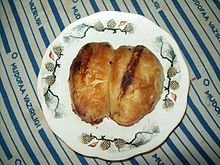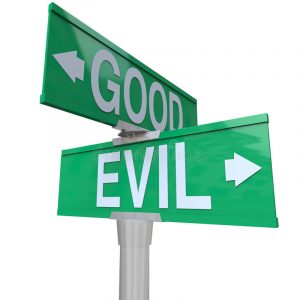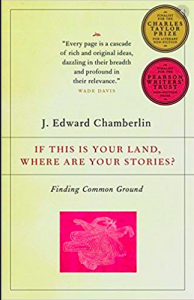The Characters of Green Grass Running Water
This blog post will be information and hyper-links to my research on the characters of King’s novel Green Grass, Running water, from pages 90-110. I’m using a digital edition, but the Page starts from the line “Maybe we should call him Little Beaver or Chingachgook or Blue Duck.” (King p.90) And ends on line “There was a bottle in his hand, and he was naked from the waist down, his…” (King p.110).
Characters:
First Women
She is a primary character from North American Indigenous mythology. She features in Earth Diver creation stories, with her falling from the sky and that is generally followed by the creation of Turtle Island. As mentioned by Flick (1994), when trying to start his story, Lone Ranger tries many opening lines which doesn’t ever feel right to him or his companions, until he starts by mentioning the First Woman in Cherokee.
Ahdamn
The First Women’s companion in the novel, his name is a phonetic reference, heard the most clear when read out loud, to Adam from the Genesis story of the creation of man and the Garden of Eden (Flick pg. 147). In this part of the story, it is the First Women who makes the garden in which she meets Ahdamn. Another irony is that they choose to leave the garden and feel rather freed in doing so, leaving GOD behind in the garden. An interesting irony and switch from the traditional Christian story.
Coyote
Is a trickster figure from North American First Nations mythology. He is part of the race of the First People, mythic creatures who lived before humans existed. They’re very powerful creatures that created the world we live in, human life and culture. But they were capable of human emotion and flaws, such as being wise or stupid, brave or cowardly, etc. (Flick p.147). In the story Coyote is curious, a bit lazy, but knowledgeable and mischievous. Much different from the slandered story of the Christian God and the story works hard to highlight these differences in these mythical figures.
http://https://www.youtube.com/watch?v=eAKHGe6x8n8
Dr. Joseph Hovaugh
His name is a play on the name Jehovah, from Jehovah’s Witnesses, with H making the ‘j’ sound that is found in many Spanish words (Flick p.147). He’s the doctor in charge of running the asylum, Babo’s “Crazy Hospital.” The very hospital the four Indian elders escape from. Though they weren’t a threat to anyone, the four old Indians were locked up in the hospital, but they apparently repeatedly make their escape from their prison. In the novel Dr. Hovaugh main interested is his garden, a light reference to his name and obsession with the Christian religious outlook on life. His role in keeping the elders in a crazy house is also reflective of the actions of Christian missions to educate the North American Indigenous populations. He cares more for his garden, God/religion, than the actual wellbeing of the people he must tend to, one of King’s more solid critiques.
Sergeant Ben Cereno
A character in Melville’s story “Benito Cereño.” In which a mutiny of black slaves occurs on board a ship, led by a black barber Babo, with the Spaniard Cereno being the captain of the ship (pg. 146). We see both characters in King’s story, with Cereno being the police officer investigating the case of the missing Indigenous elders from the hospital. He interrogates Babo, another reference to the story, who asks him if his name is Italian or Spanish, and who he mistreats by referring to her with racial slurs. His mistreatment of Babo causes problems for his investigation that could have been avoided if he had treated her better, a critique found in the original text as well.
Lone Ranger
Is a reference to the fictional character of the same name, who is a Masked hero 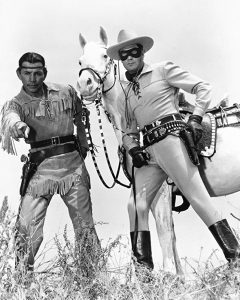 from the Western Genre of media. He is a heroic Texas ranger, that journeys with Tonto, his faithful Indian companion. He has been in many forms of popular media and is well know. From Western books, a radio serial from1933 by Fran Striker, a 50’s television series, and many movies. The more famous among them being: The Lone Ranger (1938) and (2013), The Lone Ranger Rides Again (1939), and The Legend of the Lone Ranger (1981) (Flick p. 141).
from the Western Genre of media. He is a heroic Texas ranger, that journeys with Tonto, his faithful Indian companion. He has been in many forms of popular media and is well know. From Western books, a radio serial from1933 by Fran Striker, a 50’s television series, and many movies. The more famous among them being: The Lone Ranger (1938) and (2013), The Lone Ranger Rides Again (1939), and The Legend of the Lone Ranger (1981) (Flick p. 141).
Though this interpretation of the idea of the First Nations people of North America, in the form of Westerns, we find King giving the name of the Texan ranger to his Indigenous character. Who ironically is a character that has been made famous and profited off a certain cliché characterization of Indigenous people. And the 2013 movie of its name is a testament to it’s lasting impact on modern cinema, though its poor ratings on Rotten Tomatoes is less so a good indication of its past history.
Ishmael
A character in the novel Moby Dick by Herman Melville, and is the narrator of the  tale. As the sole survivor of the crew after the Moby Dick destroys the Pequod, Ishmael survives by staying afloat on Queequeg’s coffin. His name is also biblical reference, Gen.15.-15.
tale. As the sole survivor of the crew after the Moby Dick destroys the Pequod, Ishmael survives by staying afloat on Queequeg’s coffin. His name is also biblical reference, Gen.15.-15.
Robinson Crusoe
The main character and hero of Defoe’s novel, Robinson Crusoe (1719). Which can be argued to be the first English Novel and the most famous desert island narratives. He is a shipwrecked mariner, who survives because of his ingenuity and his story is one of finding strength in spirituality because of adversity. In his story he is also aided by Friday, a “savage” he Christianizes after he rescues him from a group of Cannibals.
In King’s novel Crusoe is one of the four elders and through this name, King once again uses irony to help reclaim the idea of who and what kind of person can be the main character to a story. Using the name of such a famous and well known character
Alberta Frank
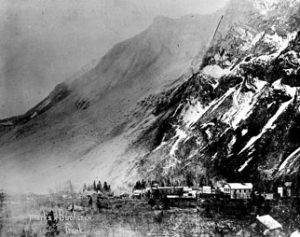 Is our main female character in King’s novel and she portrays those of First Nation decent who are still connected to their cultural roots and wish to keep them alive. Her name suggests a reference to the province of Canada, and as Flick mentions, she herself is a frank person. It could also be a reference to the small town Frank, Alberta, which rests on the Turtle River. In 1903 a rockslide hit the town causing a major disaster. The date of 1903 is one mentioned by Dr. Hovaugh, so it has some credit.
Is our main female character in King’s novel and she portrays those of First Nation decent who are still connected to their cultural roots and wish to keep them alive. Her name suggests a reference to the province of Canada, and as Flick mentions, she herself is a frank person. It could also be a reference to the small town Frank, Alberta, which rests on the Turtle River. In 1903 a rockslide hit the town causing a major disaster. The date of 1903 is one mentioned by Dr. Hovaugh, so it has some credit.
Reference:
‘Adam and Eve | Biblical Figures | Britannica’ <https://www.britannica.com/biography/Adam-and-Eve-biblical-literary-figures> [accessed 16 March 2020]
‘Benito Cereno | Short Story by Melville | Britannica’ <https://www.britannica.com/topic/Benito-Cereno> [accessed 16 March 2020]
‘Canlit.ca 161-162-ReadingFlick.Pdf’ <https://canlit.ca/wp-content/uploads/2015/01/canlit161-162-ReadingFlick.pdf> [accessed 16 March 2020]
‘Coyote | Mythology | Britannica’ <https://www.britannica.com/topic/Coyote-mythology> [accessed 16 March 2020]
Coyote and Raven, American Tricksters: Crash Course World Mythology #22<https://www.youtube.com/watch?v=eAKHGe6x8n8> [accessed 16 March 2020]
‘Frank Slide: Canada’s Deadliest Rockslide | The Canadian Encyclopedia’ <https://www.thecanadianencyclopedia.ca/en/article/frank-slide-feature> [accessed 18 March 2020]
‘Jehovah’s Witness | Religion’, Encyclopedia Britannica<https://www.britannica.com/topic/Jehovahs-Witnesses> [accessed 17 March 2020]
‘Lone Ranger | Fictional Character | Britannica’ <https://www.britannica.com/topic/Lone-Ranger> [accessed 16 March 2020]
‘Robinson Crusoe | Overview of Novel by Daniel Defoe’,Encyclopedia Britannica<https://www.britannica.com/topic/Robinson-Crusoe-novel> [accessed 9 March 2020]
‘The Lone Ranger (1949-1957)’, IMDb<https://www.imdb.com/title/tt0041038/mediaviewer/rm3744535552> [accessed 9 March 2020]
‘The Lone Ranger (2013) – Rotten Tomatoes’ <https://www.rottentomatoes.com/m/the_lone_ranger> [accessed 18 March 2020]
‘Moby Dick | Summary, Interpretation, & Context | Britannica’ <https://www.britannica.com/topic/Moby-Dick-novel> [accessed 18 March 2020]
‘Turtle Island | The Canadian Encyclopedia’ <https://www.thecanadianencyclopedia.ca/en/article/turtle-island> [accessed 7 February 2020]


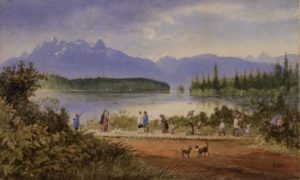 endeavor to present a form of Canadian whiteness based on British civility (5). So the idea of White Canadians is one connected with British civilized society. Imaging Canadians in the 18th and 19th centuries in standard British town clothes and dealing with more ‘intellectual’ or ‘civilized’ aspects, that turn away from narratives of violence. Yet this is only done when one learns to forget the uncivil acts of colonization and nation-building. The Royal Proclamation fits into this narrative, as the document itself does not mention the reason for its existence, but it is because there is violence between colonizers and the Aboriginal people of the land. Colonization and expansion into West of the original Atlantic colonies was a violent act, which Aboriginals resisted with equal force. The reason the document came to be was that now with the French gone, there was no one to stop the colonies from expanding into the ‘new’ territory. The Aboriginals knew that and that is why the tried to resist in Pontiac’s War. But this document doesn’t mention the situation and calls all the people of the land as under the King’s rule, even though no one believed the Aboriginals had any real rights to the land or even considered them people under the same ruler. It tries to hide past violence and struggles to stop new violence that is bound to happen in the situation. And violence does happen, many historians cite this document to be a reason for the American Revolution, people wanted to expand and refused to abide by the decoration, expanding to the West either way
endeavor to present a form of Canadian whiteness based on British civility (5). So the idea of White Canadians is one connected with British civilized society. Imaging Canadians in the 18th and 19th centuries in standard British town clothes and dealing with more ‘intellectual’ or ‘civilized’ aspects, that turn away from narratives of violence. Yet this is only done when one learns to forget the uncivil acts of colonization and nation-building. The Royal Proclamation fits into this narrative, as the document itself does not mention the reason for its existence, but it is because there is violence between colonizers and the Aboriginal people of the land. Colonization and expansion into West of the original Atlantic colonies was a violent act, which Aboriginals resisted with equal force. The reason the document came to be was that now with the French gone, there was no one to stop the colonies from expanding into the ‘new’ territory. The Aboriginals knew that and that is why the tried to resist in Pontiac’s War. But this document doesn’t mention the situation and calls all the people of the land as under the King’s rule, even though no one believed the Aboriginals had any real rights to the land or even considered them people under the same ruler. It tries to hide past violence and struggles to stop new violence that is bound to happen in the situation. And violence does happen, many historians cite this document to be a reason for the American Revolution, people wanted to expand and refused to abide by the decoration, expanding to the West either way In Robinson’s novel, Living by Stories, the story told in, “Coyote Makes a Deal with the King of England”, is said to be a form of interfusion literature. In “
In Robinson’s novel, Living by Stories, the story told in, “Coyote Makes a Deal with the King of England”, is said to be a form of interfusion literature. In “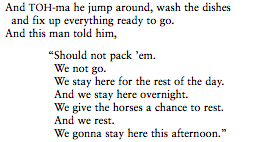
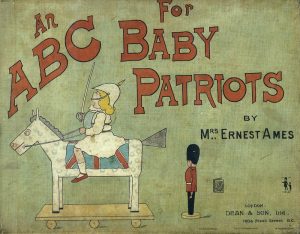 In his novel, The Truth about Stories, King re-tells two creation stories, the Christian one with Adam and Eve, and a First Nation one about Charm and her twins. After recounting both stories, King tells us we must choose only one to believe in, as that is the nature of a creation story (King 33). King admits to his hypocrisy, telling us that he understands that dichotomies are rarely true, but they are simple and powerful tools to express the values of a society and the differences of one from the other.
In his novel, The Truth about Stories, King re-tells two creation stories, the Christian one with Adam and Eve, and a First Nation one about Charm and her twins. After recounting both stories, King tells us we must choose only one to believe in, as that is the nature of a creation story (King 33). King admits to his hypocrisy, telling us that he understands that dichotomies are rarely true, but they are simple and powerful tools to express the values of a society and the differences of one from the other.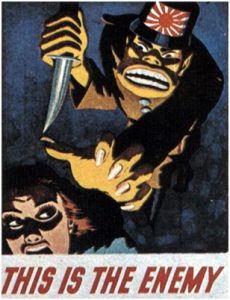 In asking us to choose through use of a dichotomy, he showcases the power that dichotomies have in creating narratives about us, in reflection to others. If you are strong, that means you’ve overcome weakness, it is an oxymoron to describe a person to be strong and weak at the same time because they are antonyms to each other. Similar to how the British used narratives such as this to distinguish people in their vast empire, seen best in an
In asking us to choose through use of a dichotomy, he showcases the power that dichotomies have in creating narratives about us, in reflection to others. If you are strong, that means you’ve overcome weakness, it is an oxymoron to describe a person to be strong and weak at the same time because they are antonyms to each other. Similar to how the British used narratives such as this to distinguish people in their vast empire, seen best in an 

